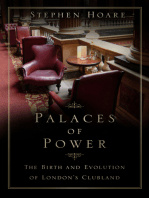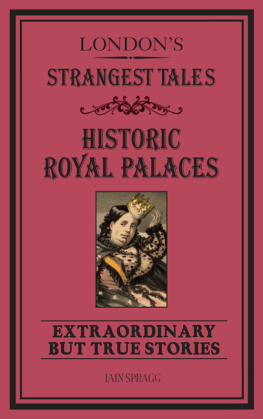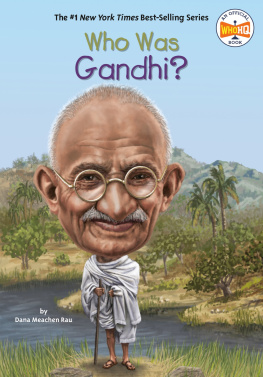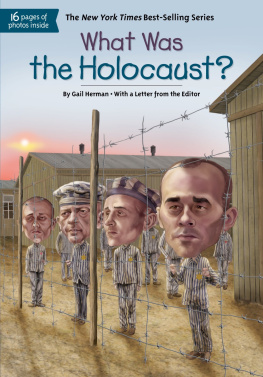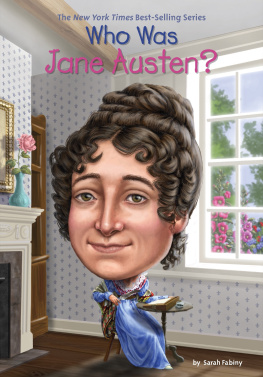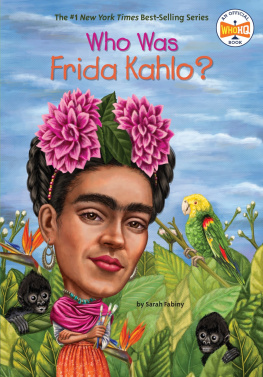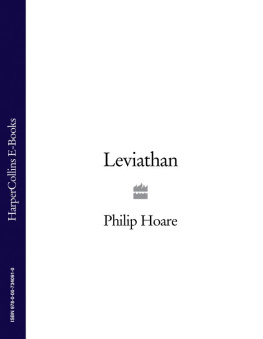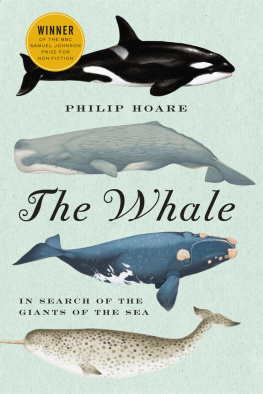Stephen Hoare - Palaces of Power: The Birth and Evolution of Londons Clubland
Here you can read online Stephen Hoare - Palaces of Power: The Birth and Evolution of Londons Clubland full text of the book (entire story) in english for free. Download pdf and epub, get meaning, cover and reviews about this ebook. year: 2019, genre: Detective and thriller. Description of the work, (preface) as well as reviews are available. Best literature library LitArk.com created for fans of good reading and offers a wide selection of genres:
Romance novel
Science fiction
Adventure
Detective
Science
History
Home and family
Prose
Art
Politics
Computer
Non-fiction
Religion
Business
Children
Humor
Choose a favorite category and find really read worthwhile books. Enjoy immersion in the world of imagination, feel the emotions of the characters or learn something new for yourself, make an fascinating discovery.
- Book:Palaces of Power: The Birth and Evolution of Londons Clubland
- Author:
- Genre:
- Year:2019
- Rating:3 / 5
- Favourites:Add to favourites
- Your mark:
- 60
- 1
- 2
- 3
- 4
- 5
Palaces of Power: The Birth and Evolution of Londons Clubland: summary, description and annotation
We offer to read an annotation, description, summary or preface (depends on what the author of the book "Palaces of Power: The Birth and Evolution of Londons Clubland" wrote himself). If you haven't found the necessary information about the book — write in the comments, we will try to find it.
Stephen Hoare: author's other books
Who wrote Palaces of Power: The Birth and Evolution of Londons Clubland? Find out the surname, the name of the author of the book and a list of all author's works by series.
Palaces of Power: The Birth and Evolution of Londons Clubland — read online for free the complete book (whole text) full work
Below is the text of the book, divided by pages. System saving the place of the last page read, allows you to conveniently read the book "Palaces of Power: The Birth and Evolution of Londons Clubland" online for free, without having to search again every time where you left off. Put a bookmark, and you can go to the page where you finished reading at any time.
Font size:
Interval:
Bookmark:
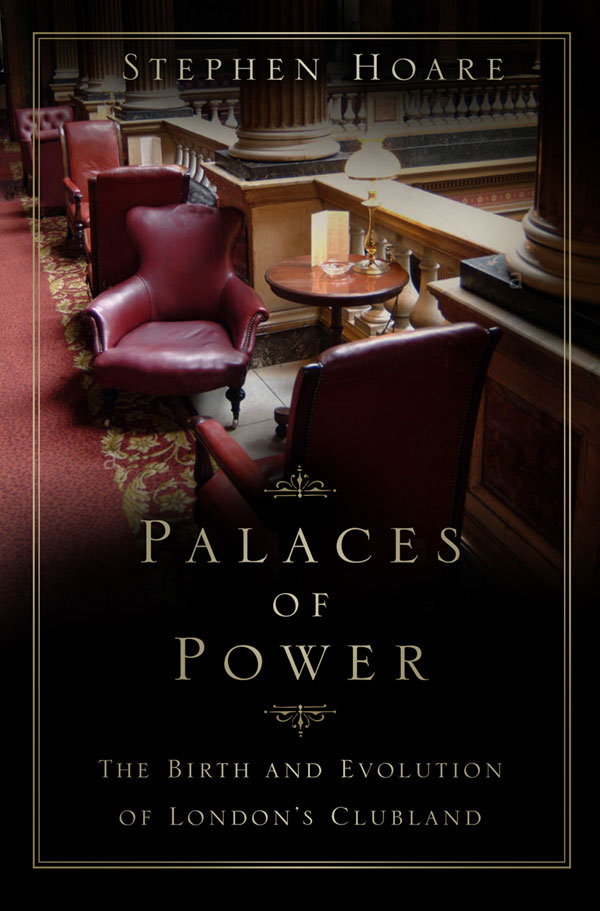

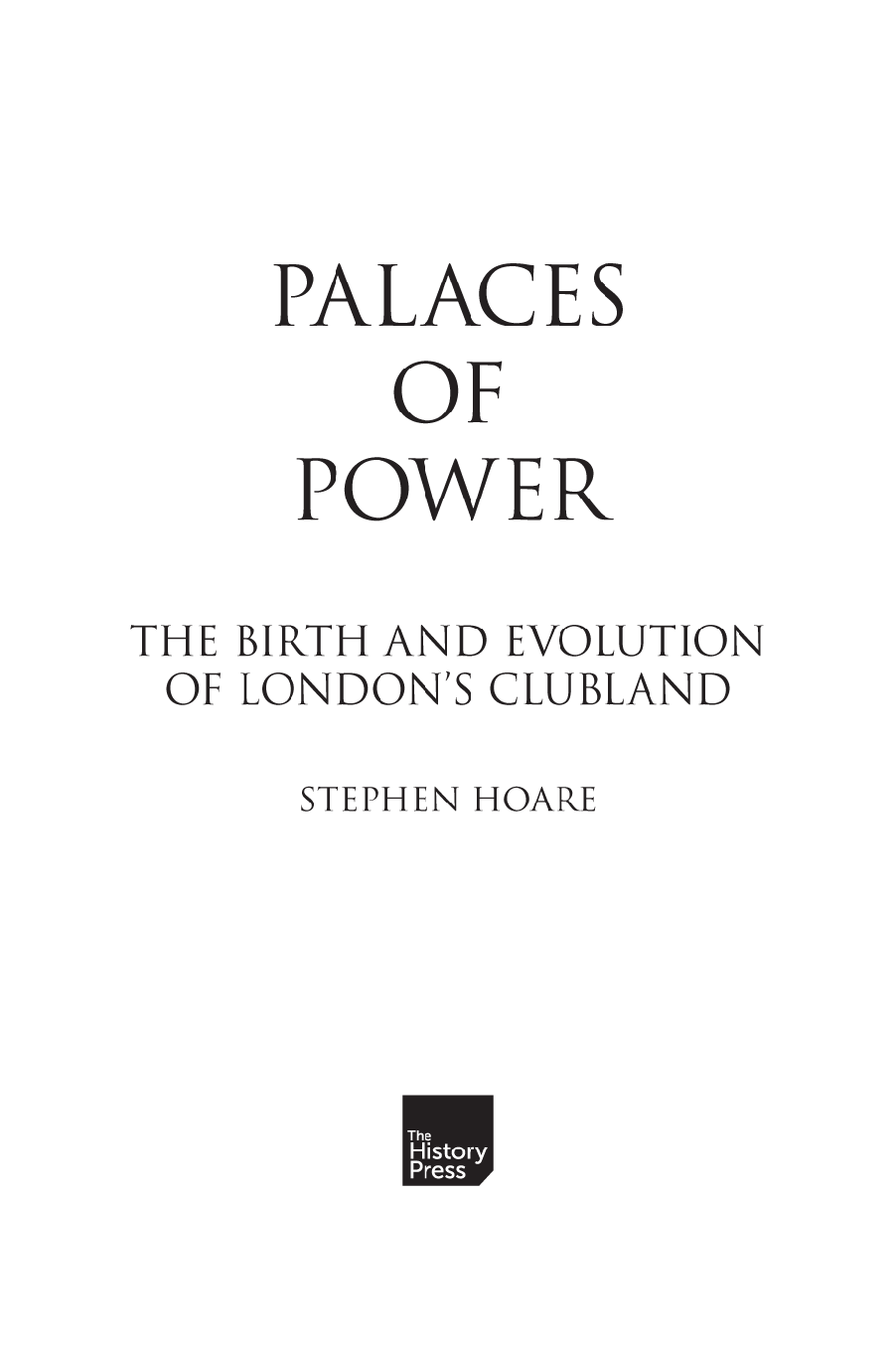
First published 2019
The History Press
97 St Georges Place, Cheltenham,
Gloucestershire, GL50 3QB
www.thehistorypress.co.uk
Stephen Hoare, 2019
The right of Stephen Hoare to be identified as the Author of this work has been asserted in accordance with the Copyright, Designs and Patents Act 1988.
All rights reserved. No part of this book may be reprinted or reproduced or utilised in any form or by any electronic, mechanical or other means, now known or hereafter invented, including photocopying and recording, or in any information storage or retrieval system, without the permission in writing from the Publishers.
British Library Cataloguing in Publication Data.
A catalogue record for this book is available from the British Library.
ISBN 978-0-7509-9284-8
Typesetting and origination by The History Press
Printed and bound in Great Britain by TJ International Ltd
eBook converted by Geethik Technologies
The London members club is an extraordinary success story. It is a product of the very beginnings of modern London in the eighteenth century. It transformed itself, both in numbers and in the luxuriousness of its clubhouses, in the nineteenth century for many, the clubs golden age. In the twentieth century it is possible to discern signs of decline and decay, especially in the clubs historic centre in the aristocratic parish of St Jamess, Westminster. Even then, though, the idea of the club never lost its attractiveness. And now, in the last twenty or thirty years in particular, the club has burst far beyond its historic confines in one or two central London parishes and found a new lease of life in districts that once had lurid reputations for vice and crime but have now been resurrected as ultra-smart. Rather than being rendered irrelevant to the modern age, the club has readily accommodated Londons restless desire for all things new; rather than discarded as unfashionable, the London club has recovered its reputation as a symbol of good taste. Why is this?
One reason, it seems to me, lies in the very nature of London. Even in the eighteenth century, London was an urban wonder. The largest city in Europe, it dwarfed the towns and cities of Britain. So, in many ways, it still does. After a period of decay for thirty years or so following the Second World War, when London lost over 2 million people and scores of thousands of jobs, it has recovered to reach and even surpass its previous high-point of some 8 million people; the next largest city (Birmingham) is just about one-eighth of its size.
In all this time, Londons growth has depended on immigration. Even in the eighteenth century only a minority of Londoners were London-born. In the nineteenth century, ten decades of astonishing growth when the metropolis multiplied its population six-fold, immigration was so much the life-blood of the city that observers worried that the pure-bred cockney was a mere specimen of physical and mental degradation. Even in the years of Londons decline in the second half of the twentieth century, largescale immigration from home and abroad fuelled those positive signs of energy and rebirth that coalesced in Swinging London. In the twenty-first century, when the British-born population now makes up just 62 per cent and when more than a third of Londoners are born abroad, the economic driving-force of immigration is plain for all to see. London, then, is a city of strangers. And so it has been for the past 300 years.
It is in this migrant-fuelled growth of London 300 years ago that we find the birth of the club as an idea and when we see that idea taking root in metropolitan soil. It should come as no surprise that freemasonry assumed its modern world-wide form in London in 1717, for it was in this city of strangers that men and it was men at that time had to create their own connections, make their own friends on whom they could rely in frequent times of trouble. The lodge and the club formed part of this solution to a pressing need for those newly arrived in London: the need for an identity in a whirling city where perhaps you might know just one or two people, sometimes none at all; the need for neighbourliness in a city notorious for a shifting preoccupied population that never seemed to root itself in one place; and for visibility in a place where swarming crowds rendered every individual invisible.
The club survived and, indeed, now flourishes because it continues to fulfil these needs. All this is not to deny the clubs ups and downs in its 300-year history. It has not had an easy ride. Just as London has suffered its own blows of outrageous fortune, the club has had to adapt to changing circumstances, uncomfortable and incomplete though that adaptation has sometimes proved the antediluvian reluctance of a few clubs to admit women members is a case in point. If the London club has shown an indestructible longevity then in the process it has become a great deal altered. Not the least of these changes has been that move away from its historic centre. As London has grown on the ground, so has its Clubland become far-flung and dispersed. And yet the historic connection with clubs and St Jamess is still so strong that when people speak of Londons Clubland, as they still do, it is the streets between and around Piccadilly and Pall Mall that they have in mind.
Stephen Hoares genial history of this Clubland-at-home reveals to us just how that connection between the club and St Jamess arose and how it changed over time. It is a fascinating story and it is told with wit and verve. Those of us who think we know our London history tolerably well will find much that is new here. And Hoare convinces us that the London club, and its connection with Londons most exclusive parish, is a story that goes to the heart of just what London has meant to its people over the past 300 years.
Jerry White
Reform Club
June 2019
This book grew out of my MA dissertation at Birkbeck, University of London, the title of which was A comparison of the coffee-houses of St Jamess and Cornhill in the long eighteenth century. For this I would like to thank my supervisor Professor Jerry White for the advice he gave when I decided to extend the scope of my studies to focus on members clubs. Also, to Professor Penelope Corfield of Royal Holloway College University of London, Dr Gillian Williamson and members of the Long Eighteenth Century Seminar Group at the Institute for Historical Research, Senate House for their support and encouragement. Thanks also to my fellow journalist and historian Peter Guy Brown for his constructive comments on my draft and especially to Michael Jeremy Hodges of Brookss for his forensic eye for detail when reading the final manuscript.
I am indebted to the many London clubs whose response to my inquiries has given my book depth and focus. I offer especial thanks to Charles Sebag-Montefiore, secretary of the Society of Dilettanti, Mark Rivett, secretary of the Oriental Club, Julie Owens of the In and Out Naval and Military Club, Sheila Markham, librarian of the Travellers Club and Brookss, Simon Blundell, librarian of the Reform Club, Mohammed Anzouai, Chief Steward at the Reform Club, Sheron Easter, membership secretary of the Reform Club, Dr Peter Urbach, archivist at the Reform Club, Jennie de Protani of the Athenaeum, Seth Alexander Thevoz, librarian of the National Liberal Club, and, not least, to Helen ONeill and Yvette Dickerson of the London Library, St Jamess Square, and Lizzie Morcom of Senate House Library.
Next pageFont size:
Interval:
Bookmark:
Similar books «Palaces of Power: The Birth and Evolution of Londons Clubland»
Look at similar books to Palaces of Power: The Birth and Evolution of Londons Clubland. We have selected literature similar in name and meaning in the hope of providing readers with more options to find new, interesting, not yet read works.
Discussion, reviews of the book Palaces of Power: The Birth and Evolution of Londons Clubland and just readers' own opinions. Leave your comments, write what you think about the work, its meaning or the main characters. Specify what exactly you liked and what you didn't like, and why you think so.

